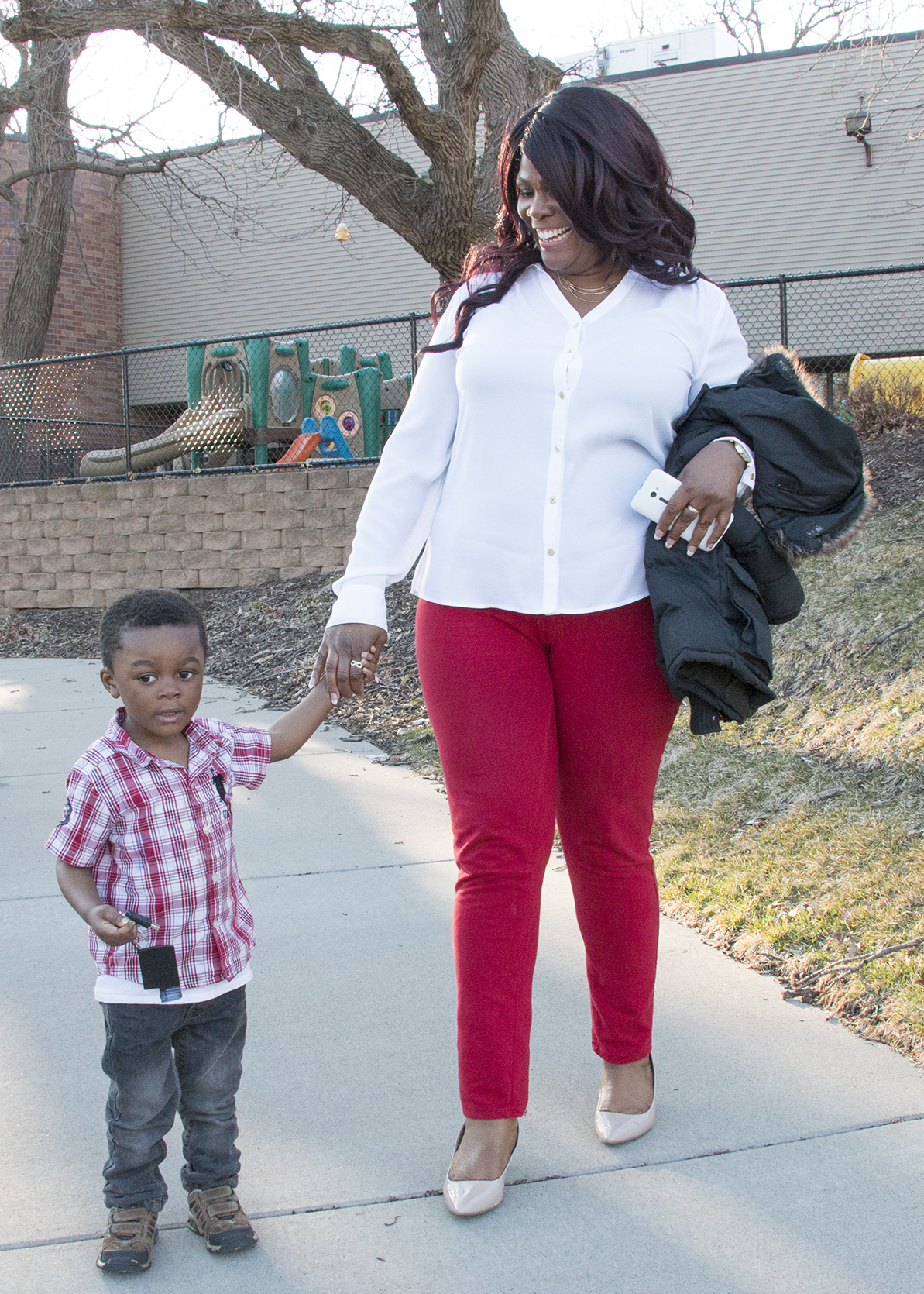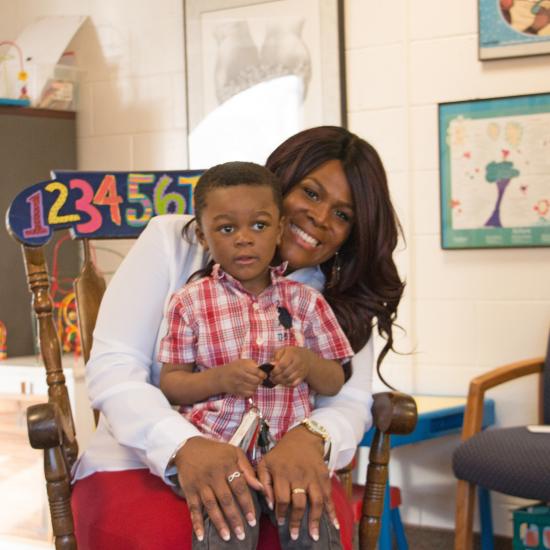It's Grown to Be Our Home: A Whole-Family Focus at the Child Development Center
When Dinata joined Wilder’s Child Development Center more than ten years ago, she was a young parent who was determined to seek a high-quality child care center where her twins would develop and learn new skills each day. Because she did not have a vehicle, Dinata used a double stroller during the winter months to bring her children to school. As she pursued this goal, she was also working hard to obtain an education, establish a career and provide a stable, loving home for her children.
Eventually, all four of Dinata’s children attended the Child Development Center. Isaiah and Alaysha, now 12, Esabella, 6, and Ezra, the 3-year-old baby of the family, found the specific academic, social and emotional support they needed to succeed. Dinata found a place where her whole family can thrive. “It’s grown to be our home,” she says.
Approaching Education as a Learning Community
Creating a community in which whole families feel supported is the backbone of the Child Development Center’s approach to education. “Our philosophy is to partner with our parents and establish a trusting, respectful relationship between parents, students and teachers,” says Judy Ohm, director of early childhood education at Wilder.
That approach – and the Center’s focus on academic, emotional and social skills – drew Dinata to the Center. “Each of my kids need a different approach to education, and the teachers and staff worked with them and me to make sure that they were ready for kindergarten,” she says.
The Center, located in Saint Paul’s Frogtown neighborhood, serves about 75 children ages 16 months to 5 years. In each classroom, children experience a daily schedule of high quality early childhood learning, including activities designed to build social and emotional development. The goal is to send children to kindergarten with the knowledge and confidence they need to participate and lead in their future education experiences.
Families from all ethnic, economic and educational backgrounds are welcome. A majority receive financial assistance through the Minnesota Family Investment Program (MFIP), the Child Care Assistance Program (CCAP), or early learning scholarships. Families frequently face income and job pressures, difficulty finding transportation, and housing problems. Despite these challenges, students at the Child Development Center are eager to learn and grow – and recent data show how they can achieve.
Child Development Center's Evaluation Shows Gains
A Wilder Research evaluation of the effectiveness of the Center’s efforts to prepare children for school success found that nearly all the children who were evaluated made significant improvements from fall 2014 to spring 2015.
Among the highlights:
- 100 percent of 4-5 year-olds met or exceeded standards in the areas of language, cognitive development and literacy
- 100 percent of children age 3 1/2 to 4 1/2 met or exceeded standards in six core developmental growth areas
“We are thrilled with these results,” Ohm says. “They show what we see at the Center every day. With attention to the needs of each child and support for the whole family, our children can achieve despite income and education disparities.”
Working Together with a Personalized Approach to Each Child and Family

Dinata found that teachers took a personalized approach to each of her children. “If you are willing, staff and teachers will really work with you to make sure your children are learning,” she says.
For example, teachers ensured that Isaiah participated in the full school curriculum despite receiving treatments for cystic fibrosis from a nurse who visited the Center each day. School staff received information about his condition, and Dinata felt comfortable knowing that Isaiah was in a safe setting. Later, when Esabella continued to be shy and reserved as she progressed through the CDC, teachers and staff worked with Dinata to consider speech therapy and other options to improve her daughter’s communication skills.
The caring attention extended to the entire family. Dinata, who was unable to afford child care on her own, received help navigating paperwork necessary to receive child care assistance. Wilder provided transportation so that she no longer had to struggle on the city bus. Teachers and staff also encouraged Dinata to help her children continue learning outside of preschool. “I didn’t realize how important it was to do more work at home,” Dinata says. “Kids learn a lot at home.”
Dinata has seen the difference the curriculum and strong partnership have made for her children. When Esabella had her first kindergarten school conference last year, the teacher asked what kind of school Esabella had attended before. “She knew Esabella had training before coming to kindergarten,” Dinata says. “She went to kindergarten ready.”
For Ohm, successes like these show what happens when curriculum and caring come together. “We see the power of connecting with children and families to build a learning community every day,” Ohm says.
